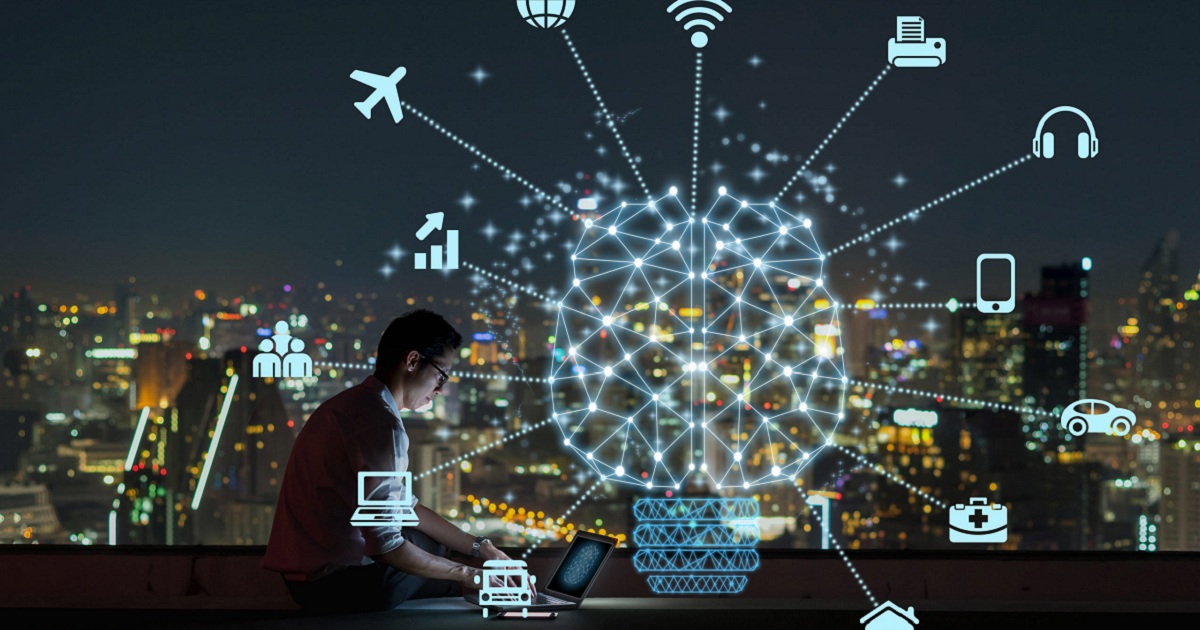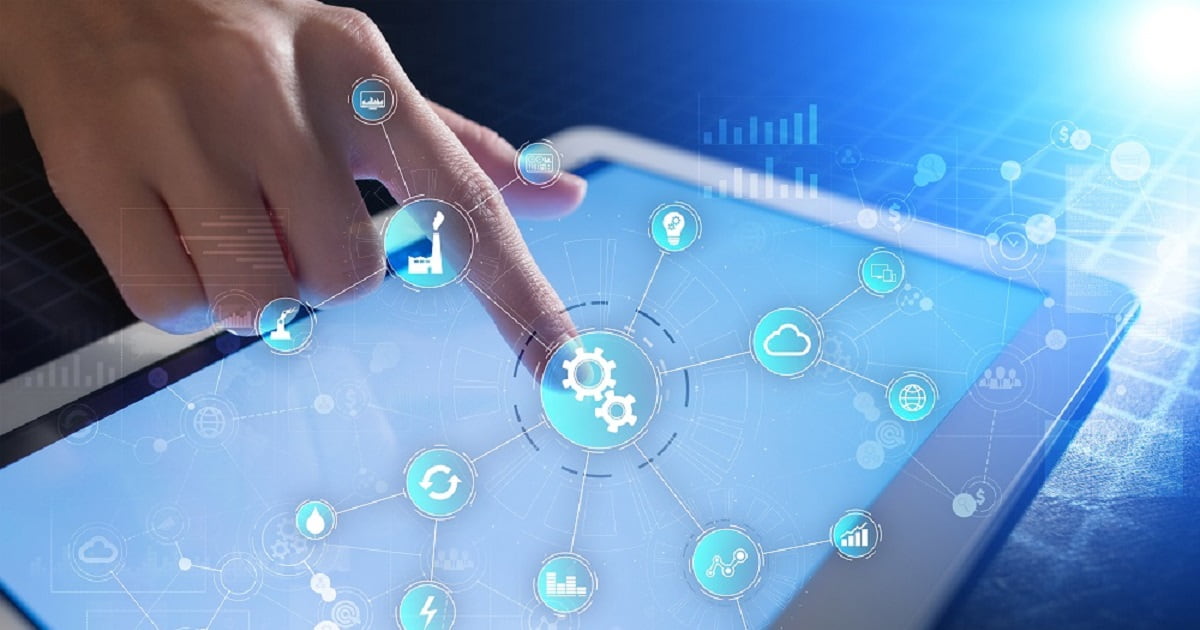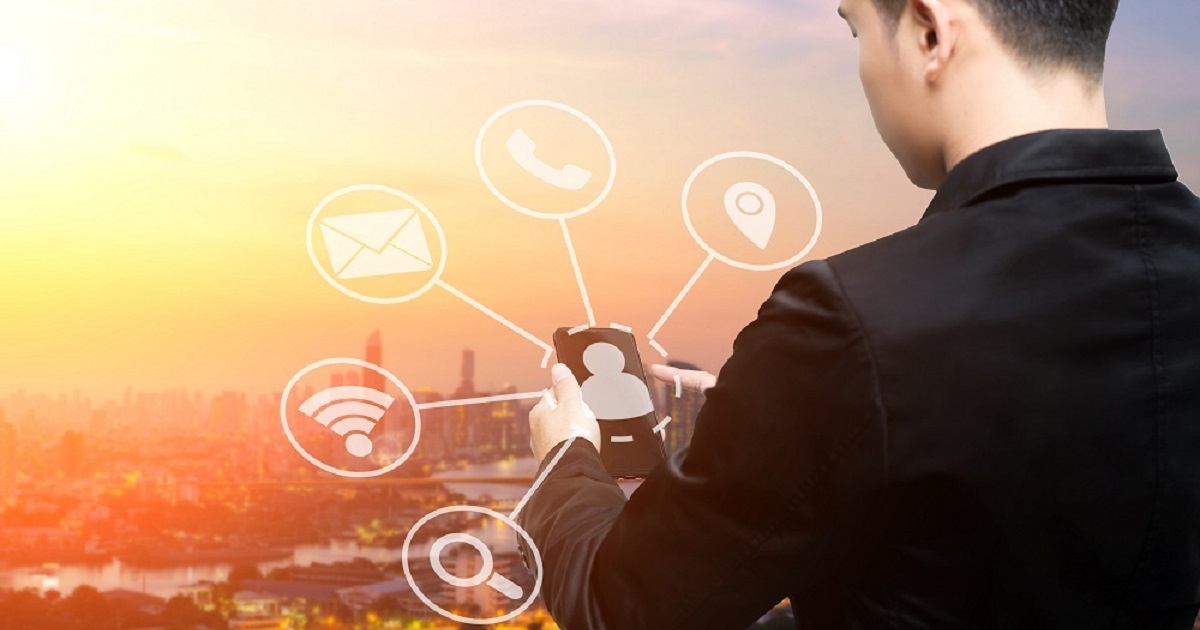
Security, IoT Security
Article | July 13, 2023
We live in the age of technological advancement and progress is happening at an unprecedented speed. With newer technologies emerging every day, it is unreasonable to not be intrigued by their implications on business. Artificial Intelligence and the Internet of Things are two independent technologies that are changing the face of several industries, one advancement at a time. While Artificial Intelligence promises to automate and simplify everyday tasks for humans, the Internet of Things is rapidly bridging the gap between physical and digital. The convergence of these two technologies promises to simplify lives through connected devices.
This convergence has already been witnessed in several industries and is being hailed as the Artificial Intelligence of Things or AIoT. Experts across industries claim that Artificial Intelligence of Things is set to redefine the future of the industry and mold intelligent and connected systems.
Applications
The Artificial Intelligence of Things is a congruence of AI and IoT infrastructures being used to achieve several applications across industries more accurately and efficiently. We already know that IoT generates scores of data, but this data is pretty useless in its raw form, it the organization, analysis, and interpretation of the data that makes it invaluable. Manually parsing through all of that data can take months given the sheer volume of it. This is where AI comes in. Modern AIs are programmed to efficiently handle large amounts of data to turn them into coherent pieces of information. Together, IoT and AI make for a great technological tool for business. Take a look at some other applications of AIoT in business.
Marketing
Good marketing comes from a series of well informed and well-researched decisions. For example, deciding on where the budget is allotted, what market strategy is put into action, or which campaign is prioritized. While human decisions can be fallible, most businesses today cannot afford to make big mistakes. This is where AIoT turns into a big help. Through the Artificial Internet of Things, marketers can get reports about market trends, probabilities, customer behavior, and more, most of these in real-time. These reports help marketers make informed decisions that are much likely to result in success.
Drones
Drones are one of the biggest advancements of IoT technology. In fact, drones are so popular with such varied applications, that drones can be talked of as a separate technology in themselves. These flying machines were originally invented for military purposes such as surveillance or weapon deployment but markets have rapidly found utility in drones for many other purposes. Today, they are being used as delivery bots, nature conservation, surveillance mechanisms, research tools, safety equipment, field substitutes, agriculture, geo-mapping, and a lot more.
With AIoT, drones have become smarter, more adaptable, and way more useful. As Artificial intelligence allows drones to make minor decisions, their applications have gotten wider and more sophisticated. In a brilliant use case of AIoT, a drone enthusiast named Peter Kohler has started the Plastic Tide Project which uses drones to locate plastic on the ocean surfaces. The drones are powered by AI which allows them to locate plastic and not other elements like marine life or corals. These drones then hover over the plastic waste and speed up the ocean cleaning process.
Drones can be used to map farmlands, determine the optimum farming processes and schedules, count the cattle, monitor their health, and even undergo certain physical tasks in agriculture, all thanks to the Artificial Intelligence of Things.
AR/VR
Augmented Reality and Virtual Reality are both heavily data-dependent technologies. There cannot be a convincing virtual reality unless there is data available for creating the said simulation. AR and VR have both found applications in several industries like healthcare, gaming, training, education, design, and manufacturing. Most of these applications fall in the critically important category and therefore, the AR or VR must be accurate to the minutest detail. This can only be achieved with mounds of data from the actual reality. With the help of IoT, this data is not accessible, and AI interprets it in a way that it can be turned into several different formats.
Infrastructure
One of the most useful applications of AIoT has been infrastructure. Artificial Intelligence of Things has fuelled innovation and planning for smart cities across the world. With the open data available for urban planning, cities are now becoming safer and more convenient to live in. AIoT has also made it possible to optimize energy consumption and ensure safer roadways through traffic surveillance. With smart energy grids, smart streetlights, and smart public transport, energy consumption and carbon emissions are both controlled.
Moreover, AIoT has given a whole new life to urban design, and now comfort and aesthetics do not have to be sacrificed for convenience.
Energy
As we discussed above, Artificial Intelligence of Things is instrumental in optimizing energy consumption in urban areas. However, the applications of AIoT in the energy sector are not limited to smart cities. Many utilities providers across the globe are already gearing up to incorporate AIoT in their process. The expected benefits from the Artificial Intelligence of Things range from improved grid management, power quality, reliability, and restoration resilience to enhanced cybersecurity and better integration of distributed energy.
Most utilities providers have still not adopted the new technology but with the increasing complexity of grid management and higher customer experience demands, there is no denying that they will have to deploy AIoT solutions to tackle these.
Robotics
In layman’s experience robots are either extremely sophisticated machines from sci-fi that undertake every task humans can and more, or they are these clunky things that can pass you the butter. In practice, however, robotics is a lot more practical than these ideas. Today, robotics is at the forefront of AIoT applications.
The Artificial Intelligence of Things is being used in robotics for several applications such as surgical procedures, manufacturing, and even first aid. In healthcare specifically, AIoT powered robots are taking huge leaps. Robotic surgery eliminates the chance of human error and offers a much more precise surgical experience with minimum invasion. This enhances the success rate of surgery and aids faster recovery in patients.
Logistics
The convergence of AI and IoT has made a huge impact on logistics as it is now possible to automate the entire process, track the goods, as well as monitor the entire trajectory from deployment to delivery. With the addition of drones and robotics, even the last mile delivery can be automated with zero human intervention. This makes for faster delivery, better customer experience, as well as a well-designed supply chain management system.
Industrial
As the concept of adding smart sensors to physical objects emerged in the 1980s, a new term was coined a decade later—Industrial Internet of Things. IIoT is now a huge phenomenon of automating and optimizing industrial operation technologies across the globe. As IIoT is deployed in several factions of the industry including manufacturing, supply chain management, human resources, and energy management, these devices and sensors generate a massive amount of data daily. The data generated from even a single process can be dizzying, and this is where AI makes a difference. AI can not only manage this data but also find the relevant points of data and analyze it for business purposes.
Edge Computing
Artificial Intelligence has given way for another technology i.e. Edge computing. Edge computing allows a device to process data itself rather than rely on remote data servers to do so. It may seem like a small feat but think of the possibilities it offers—drones don’t have to be connected to find their way, smart appliances can interact with each other without a shared network, and thermostats can change the temperature based on your past preferences automatically.
Edge computing is by no way a new technology but, in the future, it offers huge possibilities like smart automobiles and aircraft, or even robots in every home.
Frequently Asked Questions
What are the examples of Artificial Intelligence?
Some of the most common examples of Artificial Intelligence are Google Maps and Uber. The AI allows you to find routes to any destination and even hail rides there.
How does AI help IoT?
Artificial Intelligence can comb through millions of data points in seconds to come up with patterns and analyze them. As IoT generates a lot of data continuously, AI is a powerful and complementary technology that helps IoT.
Is IoT related to Artificial Intelligence?
Internet of Things and Artificial Intelligence are two separate technologies that interact with each other well as their functions aid each other progress. AI helps with the data generated by IoT, and IoT provides relevant data for AI to analyze.
{
"@context": "https://schema.org",
"@type": "FAQPage",
"mainEntity": [{
"@type": "Question",
"name": "What are the examples of Artificial Intelligence?",
"acceptedAnswer": {
"@type": "Answer",
"text": "Some of the most common examples of Artificial Intelligence are GoogleMaps and Uber. The AI allows you to find routes to any destination and even hail rides there."
}
},{
"@type": "Question",
"name": "How does AI help IoT?",
"acceptedAnswer": {
"@type": "Answer",
"text": "Artificial Intelligence can comb through millions of data points in seconds to come up with patterns and analyze them. As IoT generates a lot of data continuously, AI is a powerful and complementary technology that helps IoT."
}
},{
"@type": "Question",
"name": "Is IoT related to Artificial Intelligence?",
"acceptedAnswer": {
"@type": "Answer",
"text": "Internet of Things and Artificial Intelligence are two separate technologies that interact with each other well as their functions aid each other progress.AI helps with the data generated by IoT, and IoT provides relevant data for AI to analyze."
}
}]
}
Read More

IoT Security
Article | October 11, 2023
2022 looks bright for power optimization! The vibrant research and development in Internet of Things (IoT) is fueling the expansion of wireless monitoring solutions and enabling giant leaps in terms of low-power design. A longer lifetime for your batteries, and thus for your device, is a dream about to come true.
We have gathered some of the most notable power optimization trends that are getting us all excited for 2022…
5G, the next era of broadband cellular networks will offer improved power saving capabilities
The next wave of wider 5G cellular technology is designed to support various new highly challenging industrial use cases. These usually require increased hardware complexity and more processing, together with higher processing power. These requirements can raise power consumption quite significantly.
Smart power consumption and energy efficiency are thus becoming keys for the success of these applications and 5G technology.To that extent, 5G New Radio (NR) has progressed swiftly. The new 3GPP™ release is designed to significantly improve the performance, flexibility, scalability, and efficiency of current mobile networks. Improved power saving features now allow IoT developers to get the most out of the available battery capacity. This could make all the difference for new IoT use cases and efficiencies.
A new generation of sensors are optimized for low power technologies
New families of ‘breakthrough’ sensors, based on anultra-low power architectureare optimized for use in compact wireless devices. These sensors offer a richer set of functionalities and can be combined to create new insights (sensor fusion). One of the greatest challenges facing developers of these small form-devices is power consumption. Aware of these limitations, hardware manufacturers have been working hard to address them. Integrated circuit designs and techniques are now using less power while smart processing capabilities are enabling the sensors to intelligently manage sensing functionalities,delivering ultra-low power performance for best-in-class power consumption. The use of advanced Low Energy Bluetooth and wireless protocols (e.g. Bluetooth Low Energy (BLE) or ZigBee Green Power) also allows the transmission of data to the gateway more efficiently compared to prior solutions, opening new possibilities for developers.
Big Data, Analytics, Machine Learning and Edge computing are picking up the pace
The explosion in data volume and diversity is forcing organizations to rethink the way they process the information. Indeed, capturing, sending and processing the information in the cloud can be taxing for the network, the storage and the computing infrastructures which demands more processing power, hence the need to keep the transmission window as short as possible.
This has led to the development of advanced devices capable of collecting, processing and storing data autonomously before the data is sent to the servers. This concept is calledEdge computing. By reducing the need for data to be streamed through the networks, diminishing computing and processing costs,Edge computing contributes to optimizing power performance, whilst delivering quality data in a more sustainable way.
The rise of DevOps and new IoT Device Management platforms are contributing to better efficiency and better devices
The rise ofDevOpshas been swift. Derived from Development and Operations, ‘DevOps’ teams are responsible for making sure that the infrastructure is being maintained properly.With the help of IoT Device Management platforms—which are a central part of today’s IoT ecosystems— DevOps teams can better manage, scale and operate their fleet of devices remotely and reduce long-term operational costs.One of the areas that benefits from the rise of DevOps implementation is power supply optimization, as more efficient protocols such as Lightweight Machine to Machine (LwM2M) allow for device and battery monitoring, remote device actions and faster communication.
Harvesting technologies are becoming more effective
Power harvesting technologies include processes where energy from ambient sources such as the sun, temperature, movement or wind, is captured and stored to power wireless autonomous devices. Now gaining experience,harvesting technologies can exploit natural resources better than ever before.
As a result,the gap between the power requirements of embedded systems and the energy generated by energy harvesting systems is finally closing. Industrial applications for these technologies are still very limited, but coupled to efficient rechargeable batteries, they can present new opportunities for devices deployed in wild remote areas.
Power optimization tools are becoming increasingly exhaustive and reliable
Battery optimization is everyone's business and needs to be considered throughout the overall system performance analysis, from prototyping to deployment and on toward maintenance cycles.
Several innovating tools haveappeared on the market over the past few years and developers have now access toa rich ecosystem of tools to analyze their overall system performance.
Wisebatt for Saft for example can help creating a virtual prototype and simulate its consumption.Deutsche Telekom’s IoT Solution Optimizergoes even further. You can model the complete system to identify potential energy consumption issues or leaks. The system can not only recommend the right combination of power saving features based on your use case, but also can help you visualize how communication payload size, protocol use and communication frequency impact your battery life.
When at the prototype stage,Qoitec Otii solution measures in real time the consumption of your device at various temperatures, up to the measurement of the firmware and hardware operations without the need for expensive testing. These tools are constantly enhanced and improved to deliver better analysis and more accurate data.
With an increased awareness from IoT developers of the stakes of power consumption and the growing rate of low-power innovations, batteries are now able to outlive the devices they’re in. This opens the doors tomany new markets and applications and above all to more sustainable consumption patterns. When we told you the future looks bright, we weren’t joking!
Read More

Enterprise Iot
Article | May 11, 2023
The nature of digital and physical security is evolving as a result of cloud-based IoT software, which enables both security components to be combined and used to exploit data better.
Commercial use of cloud-based IoT software is possible, and cloud-based solutions have some advantages in the area of security. IoT technology, which is essential to this development, is driving worldwide development in many areas and revolutionizing daily operations for many businesses.
Data is essential to success in almost every sector, and security is no exception. To better understand what's going on in your business, you can combine cloud-based solutions that contain all the information on a single interface. For instance, integrating security camera feeds with cloud-based access control systems enables real-time visual identification verification.
The Impact of Combining Physical and Cyber Security
Combining digital and physical security, often known as security convergence, helps optimize IoT and cloud-based security systems. A cloud-based physical security system needs cybersecurity software to guard against internet flaws and intrusions. Similarly, physical security measures prevent sensitive data from getting into the wrong hands. Teams for physical and cyber security might combine to provide a more comprehensive action plan. The more seamlessly all physical and digital security components are linked, the more secure and future-proof a commercial system will be.
When organizations use IoT technology, cybersecurity is a significant concern. However, by combining physical and digital security, organizations can make sure their cloud-based systems are well protected from vulnerabilities. In addition, the security and IT teams will also be better able to manage the evolving security landscape when the organization combines physical and digital security ideas.
Read More

Enterprise Iot
Article | August 3, 2022
The evolution of internet-based market models has changed the way businesses operate. Present-day businesses know that data visualization in business intelligence is integral to competitive success. Therefore, businesses are now expanding their data and intelligence retrieval capacities. As a result, IoT (Internet of Things) data visualization is gaining popularity among industrialists and researchers across various disciplines.
In corporate finance, IoT-based efficient data visualization analyses data from multiple sources with the help of corporate analytics management tools and manages data quality for business intelligence to reduce the risk of leaks.
Impact of IoT Data Visualization on Corporate Finance BI
Data is everywhere— right from a customer's first visit to your company’s website until he signs out, all the behavioral patterns and data are tracked. All this data becomes useless unless it is utilized for a particular purpose.
Analyzing this data to predict future trends is one of the significant benefits of smart data visualization tools and technologies. It helps to slice and dice the data gained from different sources of different complexity levels to the minute granular level. Business intelligence utilizes these insights and the existing database to run risk analysis.
It gives an overview of your financial performance and the risks and exposures it faces. And if you switch the KPIs at the center of any dashboard, your entire team can instantly access the most important and relevant data.
IoT data visualization can measure big data on customers more efficiently, allowing organizations to add value to their customers. Customized tools will analyze your customers’ data and produce reports according to specific customer needs to help you get a deeper insight. Corporations can also utilize this data to better understand their competitors’ benchmarks.
Customizable IoT Data to Store Millions of Data Points in One Place
IoT collects millions of data from various complex sources. The data visualization dashboard contains multiple widgets that convert this data into various forms, such as line graphs, geographical maps, bar charts, pie charts, gauges, heat maps, etc.
This information, transmitted into multiple visualizations, helps organizations to unlock every piece of data into a valuable asset.
The Benefits of Using IoT Data Visualization
Businesses can collect, analyze and monitor a variety of data using IoT, such as internet usage data, video surveillance data, mobile app usage, and social media. It helps businesses to design products and provide personalized value-added services to drive better consumer engagement. Here are some key benefits IoT data visualization offers:
Unlock multiple insights across various verticals
Addressing important financial concerns proactively
Combination of multiple data sources into a single insightful dashboard
Multi-layered visual data.
Combines new data with the existing data to analyze new business opportunities.
Better performance on IoT data flow.
Analyze multiple data correlations in real-time
Improved Collaboration
Well-coordinated and efficient performance.
Cost reduction
Accurate data interpretation
Mitigate risk factor
Better decision making
Conclusion
Hands down, IoT data visualization intelligence in a company’s business operations will lead to better decision-making. But, before you choose an IoT data visualization tool for your business, you should know what kind of data you need to analyze and if you need any additional historical data. Because IoT services offer data visualization tools and techniques to analyze and monitor the data accordingly to predict future trends. So, it’s important to identify the goals before selecting a tool for your organization.
Read More